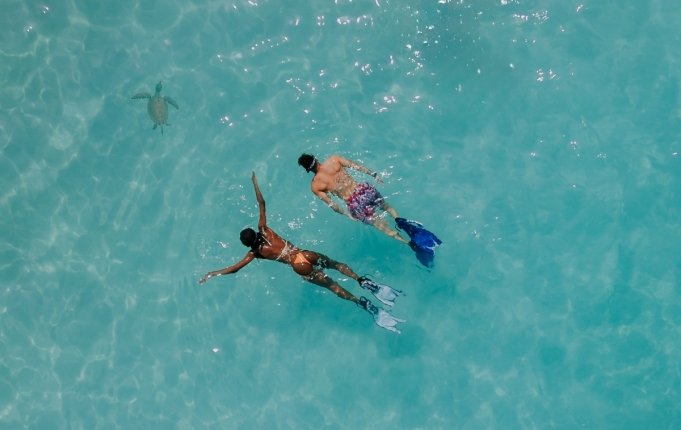There’s no better place to enjoy an ice-cold Chill, Aruba’s beach beer, than on one of the island’s beautiful beaches. We’re lucky to have some of the best beaches in the world enjoyed by both locals and visitors. But did you know that one of Aruba’s first visitors were Leatherback Sea Turtles? They have been nesting on Aruba’s beaches for millions of years.
Today, Leatherbacks, as well as Hawksbill, Green, and Loggerhead species, all of which visit Aruba’s coastal areas, are endangered. Nesting season on Aruba runs March through September, while hatching season corresponds May through November.
Female sea turtles return to the beach they were born on to lay their eggs. While Eagle Beach is the home to majority of nests, Boca Grandi, Palm Beach, and the beaches within Arikok National Park are also periodic nest sites. The red and white barricades set up on these beaches indicate the site of a nest, which are monitored by the TurtugAruba Foundation, with volunteers monitoring and protecting the nests, as well as educating the community.
Here are a few tips from the foundation to follow when encountering a nest or hatchlings:
- Limit night-time beach activity during nesting season
- Keep beaches clean of trash, especially balloons, ribbons, and plastic bags
- If building sandcastles or digging holes, be sure to break down the castles and fill the holes before leaving the beach, as these can hinder a hatchling’s journey to the sea
- Keep beach furniture and toys out of nesting areas
- Do not disturb sea turtle tracks, eggs, adults, hatchlings, or nest markers
- Report all instances of disturbance that you may witness to the appropriate authorities
- Never use flashlights or flash photography at a nest site; even cellphones can disturb hatchlings if they are near the top of the nest
- Heed instructions from patrol volunteers if you are fortunate enough to witness a nest emergence
- If you are lucky enough to spot a sea turtle while snorkeling Aruba’s crystal clear waters, observe and enjoy these gentle creatures from a distance and do not attempt to approach or touch them.

